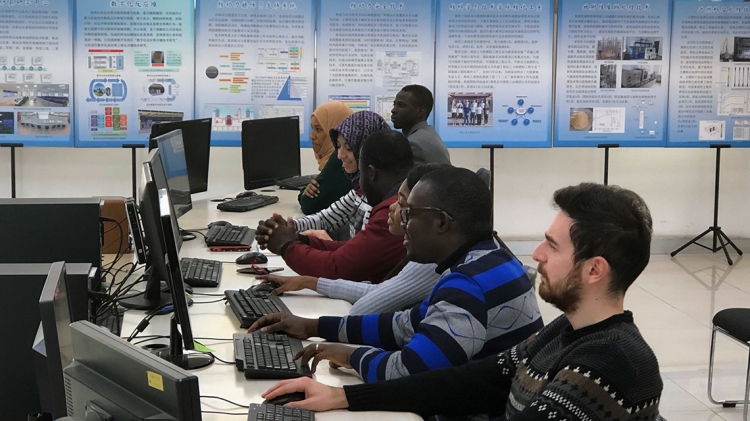Harbin, China – Thirty-five master’s and PhD students from Africa and South Asia received scholarships under China’s Atomic Energy Scholarship (AES) Programme last year to study at the country’s largest nuclear engineering school, part of Harbin Engineering University (HEU). Under an agreement between the China Atomic Energy Authority and the IAEA to assist emerging nuclear power countries, the IAEA facilitates the application process and pays the students’ airfare, while the Chinese government covers tuition and living expenses. The programme began in 2012 and has been in full swing since 2017. The application process for the 2019-2020 academic year is now under way.
“You can study nuclear sciences in Ghana, but there are limited experimental laboratories to carry out research related to nuclear power plants,” said Michael Kwaku Annor-Nyarko, a PhD student, who arrived at Harbin Engineering University this past September to research the health management of reactor systems. He works for Ghana’s nuclear regulator and is expected to play an expert role in the licensing and oversight of his country’s planned nuclear power programme. Before enrolling at Harbin, he had studied engineering, physics and computational nuclear science in Ghana, but had never seen a nuclear reactor in operation.
With 45 nuclear power reactors in operation, 11 under construction and dozens more in various stages of planning, nuclear education is a top priority in China. “Nuclear is part of the country’s answer to both surging energy demand and the threats of climate change,” said Zhijian Zhang, Vice-President of the university. “And while we are at it, we want to extend support to students from developing countries that can benefit from our expertise.”
The students will learn the basics of nuclear engineering and also familiarize themselves with uniquely Chinese methods and technology, said Mr Zhang, who is also the Vice President of the Chinese Nuclear Society. The international students study in English and are also enrolled in Chinese language classes. They study all aspects of nuclear engineering, with a special focus on power plants and radiation protection. The school is equipped with various practice rooms, including a full-scale nuclear power simulation center, a sodium fast reactor simulation system and a virtual reality lab, which allow students to learn hands on the operation of nuclear power reactors.
Due to the varying levels of the students’ scientific background when they arrive, the initial courses are tailored to meet their individual needs and level, explained Puzhen Gao, Vice Dean of the College of Nuclear Science and Technology.







